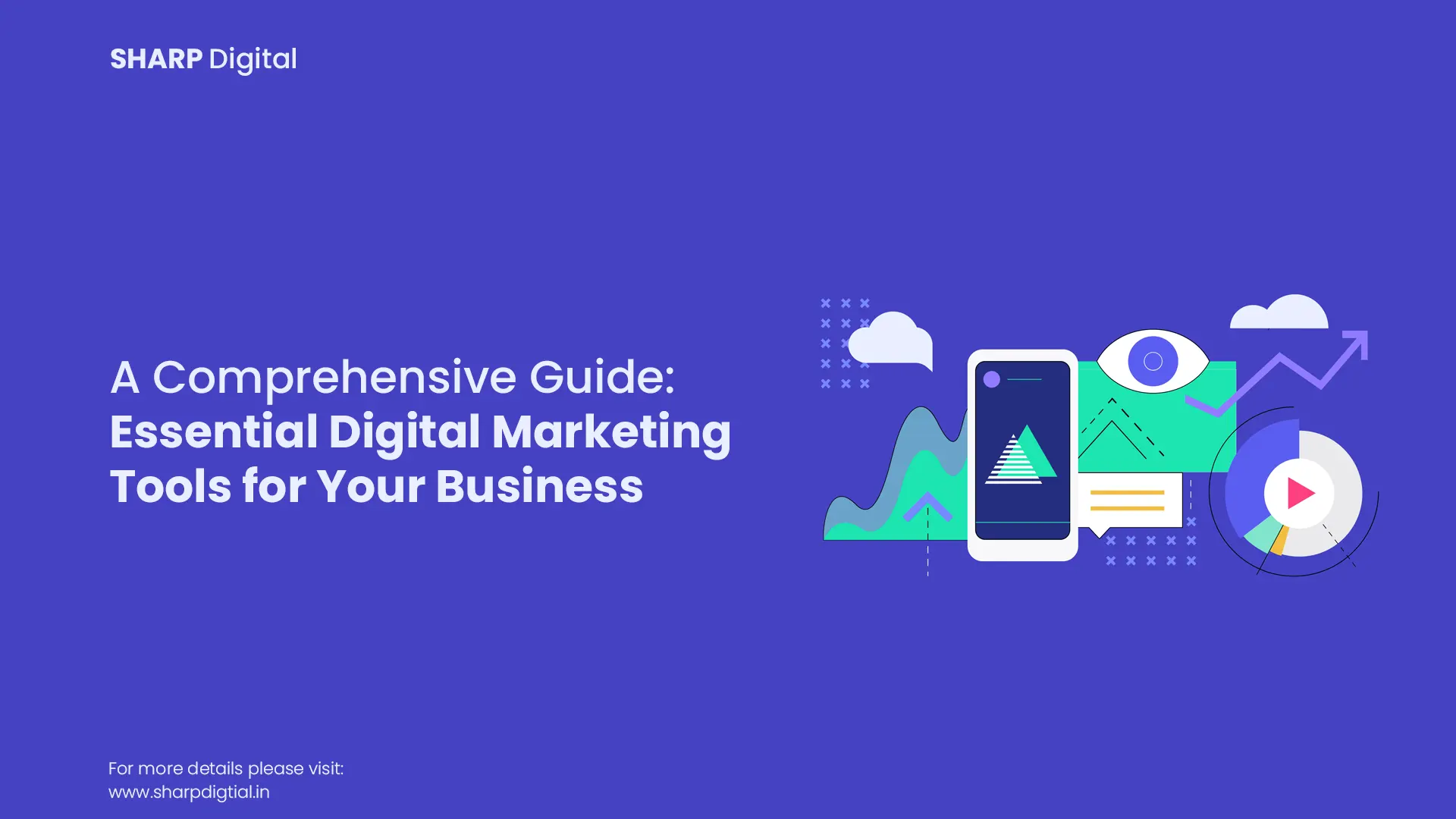Digital marketing changes fast, it can feel like a lot of new stuff. To do well, you need the right tools. These tools help you adapt, compete, and grow. Without them, it’s like building a house with your bare hands when you have cranes available.
Digital marketing is big with many strategies for reaching customers. Think of it like an orchestra, different parts like online ads, SEO, social media, email, content, and more. Each part is needed for a good performance, so you need tools for each.
Tools help you work better. They help you automate tasks, see what your audience is doing, and improve campaigns. They help you work smarter, not harder, and get good results.Before you start, remember tools are not magic. You need a plan. What do you want to do? Without goals, tools won’t help.
First, define your goals. Do you want more brand awareness, more website traffic, more leads, or more sales? Knowing your goal helps you choose the right tools. This helps you choose the right path and invest in the right tech.
Understanding Your Audience: Customer Research Tools
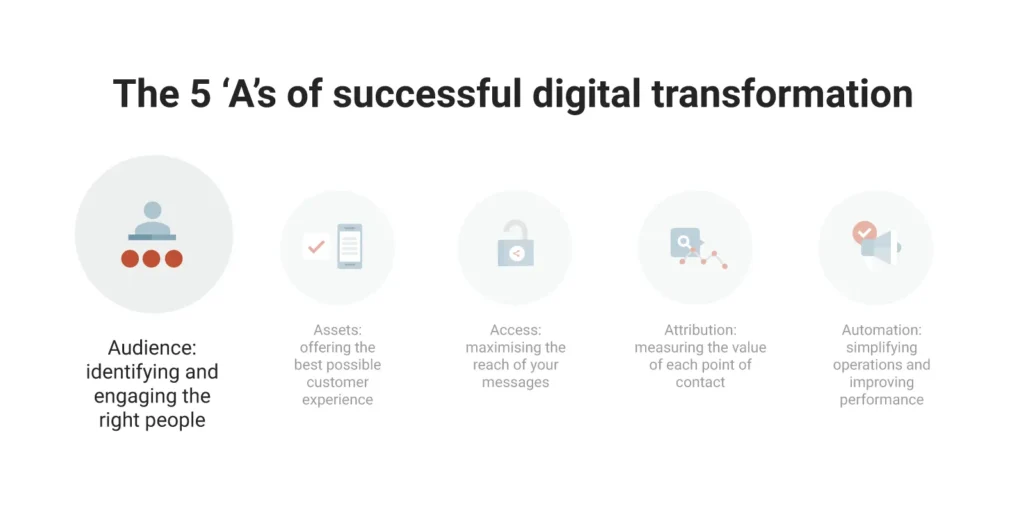
Understanding your audience is key to marketing. It’s more than just knowing their age or location. It’s about knowing what they like, what they need, and where they are online. When you know your audience well, you can send the right messages, use the right platforms, and create the right content. It’s like knowing what your client would want to buy.
Some data points are helpful, like demographics (age, gender, location), online behavior (websites they visit, content they like), and preferences (what they like, need, and their problems). This helps you create a clear picture of your customer.
Using this data, you can make better ads, create content that they need, and make your website better.
Tools for understanding customers:
- SparkToro: This helps you see where your audience spends time online, like websites, social media, and podcasts. You can see where your audience goes and what they like. It also helps you find influencers.
- Mailchimp’s Customer Journey Builder: This lets you see how your customers interact with your brand from the first contact to the purchase. This helps you know the key moments and improve your marketing.
There are more tools available, find the ones that work best for you.
Managing Customer Relationships: CRM Systems
A CRM system is key for any business. It’s more than just a database, it helps you manage and see how customers interact. It’s like your central hub for customer info. It’s important for any business that wants to grow. By keeping track of things, you can better understand customers, their behavior, and what they buy. A CRM helps you build strong relationships, leading to more loyal customers and sales. Without a CRM, you may miss chances to connect and keep customers. It’s about more than just selling, it’s about creating relationships that last.
CRM tools organize all your customer data. This includes contact info, purchase history, and more. This helps you keep track of everything. You can see leads from start to finish. CRM is not just for sales, but also for marketing and support to have the same information.
A good CRM does more than just organize info. Customer service can provide better help since they have all the customer data. Sales teams can work better with targeted approaches, leading to more sales. Marketing teams can create better campaigns based on customer data, saving money. CRM is very valuable. Tools for managing customer relationships:
- Mailchimp CRM: It does more than email marketing. It manages contacts, segments audiences, and integrates with your marketing. You can track engagement, personalize content, and see your customers in a better way within Mailchimp.
- Zapier: This helps connect your CRM with other tools like email, social media, or project management software. It automates workflows and helps data flow between your CRM and other tools, saving time.
Look into other CRM solutions like Salesforce, HubSpot, and Zoho CRM to find the right fit.
Building Your Online Presence: Website Builders
Having a website is very important for any business today. It’s your online storefront, your identity, and where customers interact. It’s how customers find you, learn about you, and buy your stuff. It’s key to your online presence. A good website will attract customers, make a good impression, build trust, and give customers the info they need about your business. Without a good website, it’s hard to compete and grow.
When choosing a website builder, think about how easy it is to use, how flexible it is, and the cost. You need something easy to use without needing tech skills, and that lets you customize things. Also, it needs to fit your budget. For new businesses, cost is a big thing. Other things to consider are mobile responsiveness, SEO tools, customer support, design, and if you can scale.
Website builders have made website creation very easy. Instead of hiring developers, you can now build your own website. These platforms are easy to use, often with drag and drop features, so you don’t need to code. This makes it easy for anyone. With pre-designed templates and customization options, you can create good websites without tech skills.
Tools for easy website creation:
- Wix: Known for its easy to use drag and drop interface. It has many templates and is very flexible. It’s good for beginners and people who want an easy way to design websites. You can add elements, customize the look, and launch your website without coding.
Organizing Content: Content Management Systems (CMS)
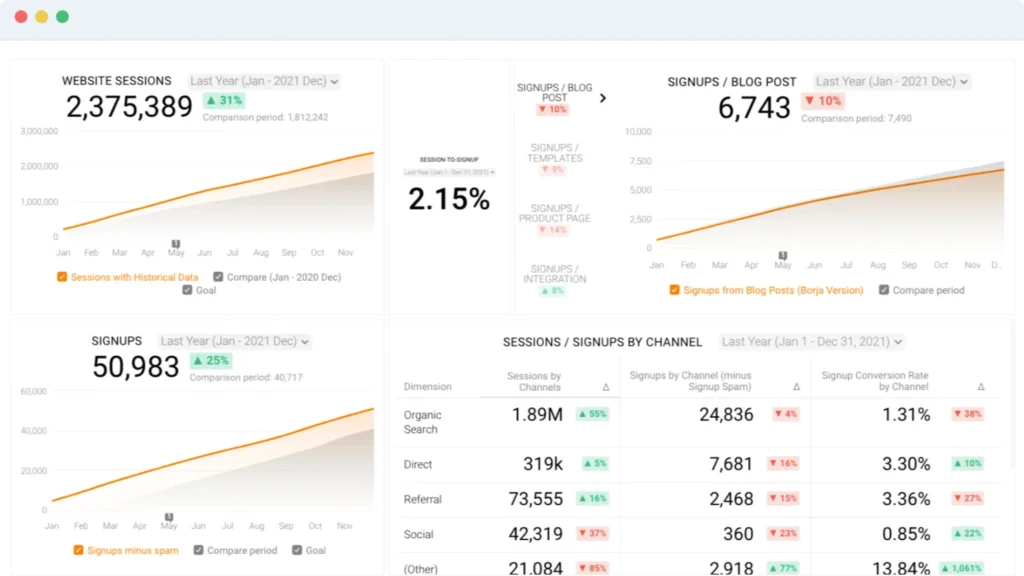
A CMS or Content Management System is the backbone of many websites. It’s where you create, organize, and manage all content. Without a CMS, updating a website would require coding knowledge and manual updates, making it hard. It’s like your website’s control center where you add blog posts, images, videos, and more, making a good experience for visitors.
CMS platforms let you organize content so it’s easy for users and search engines to find. This helps with SEO. It also lets you focus on content creation, not how to display the content.
A CMS makes website management easier and improves the user experience.
CMS options:
- Wix: While known as a website builder, Wix is also a CMS. It lets you manage your site’s content, blog posts, and online store with an easy drag and drop interface. It simplifies design and content management, making it a good option for beginners.
- Mailchimp Integration: Integrating Mailchimp with your CMS can help reach more people. For example, you can use Mailchimp to send out your new blog post to your audience.
Other platforms like WordPress, Joomla, and Drupal offer a lot of features and customization options.
Finding Engaging Content: Content Curation Tools
Content curation is finding, organizing, and sharing the best content online. It’s an important part of content marketing. In a world where content is always being made, you don’t want to keep making new content all the time. Content curation helps you give value to your audience by providing them with good content, not just your own. By sharing good content, you show you are a knowledgeable source, increasing your brand’s value.
Content curation also saves time since you are using other people’s content.
When curating content, do it ethically. Give credit to the source and add your own thoughts. Don’t just repost without adding value. You should add your opinions and comments to the content you share. Content curation is a good way to provide a flow of good information to your audience. Tools to use:
- BuzzSumo: This helps you find the most popular content in your industry. It helps you understand what your audience likes.
- UpContent: This helps you find very specific articles for your niche, providing more relevant content for your audience.
- Scoop.it: This platform lets you create a content hub where you can curate content for your audience.
There are other ways to find content, like following blogs, news sites, and industry influencers.
Creating Stunning Graphics: Graphic Design Software
Graphic design is more than just making things look good. It’s important for your brand and marketing. Good visuals help make your brand more recognizable. In marketing, good design grabs attention and makes your message clear. Whether it’s a logo, a social media ad, or an infographic, good graphic design is important. Using the right tools helps you create good visuals for your audience.
How to use graphic design tools: Understand your brand guidelines. Use templates when you can. Try different layouts, colors, and fonts to make designs that fit your message. Don’t be afraid to try new things, but keep your audience in mind. Graphic design tools help you create good content, so use them to your advantage.
Making good visuals doesn’t have to be hard. Keep things balanced by using clear fonts and colors that fit your brand. Make sure your designs are relevant to your audience, and keep your branding consistent. Other tips:
- Use high-quality images and graphics.
- Create a color palette and stick with it.
- Use white space to avoid clutter.
- Focus on readability.
- Use contrast to highlight important things.
Graphic design tools to consider:
- Canva: Good for beginners and professionals. It has an easy to use interface and many templates and design elements. Use Canva to create social media posts, presentations, and more.
- Photoshop: Powerful in graphic design. It’s good for advanced image editing and complex design projects.
- Issuu: This turns static documents into online publications. If you want to create online magazines or catalogs, Issuu is good for you.
- Pixlr: A free online photo editor that is a good alternative to Photoshop. If you need quick edits or you are starting out, Pixlr is good for you.
- Inkscape: If you like vector graphics, then Inkscape is for you. It’s good for creating graphics that can be scaled.
There are other design tools available, experimenting is good to find what is right for your business.
Boosting Visibility: Search Engine Optimization (SEO) Tools
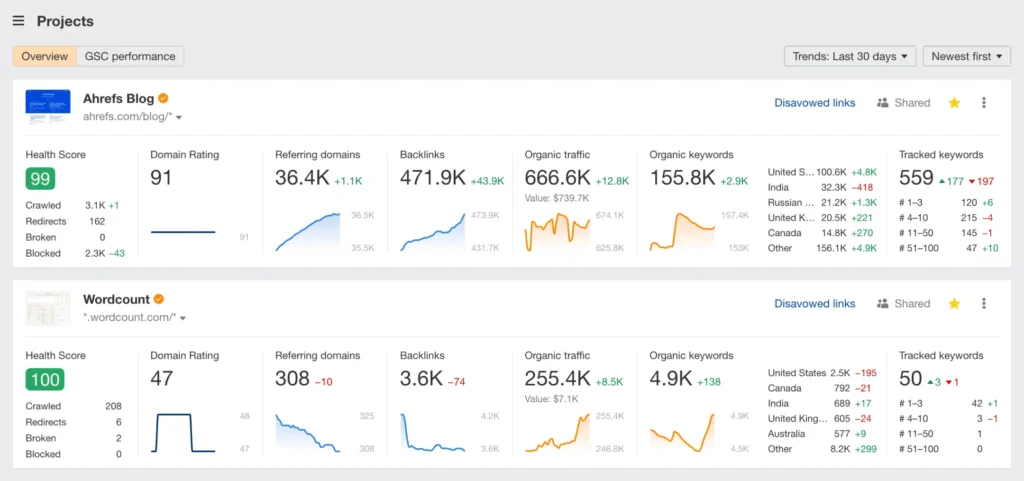
Search Engine Optimization or SEO is improving your website to rank higher in search engine results. Why is this important? Higher ranking means more visibility, more traffic, and more potential customers. SEO is not a one-time thing, it’s an ongoing process. To do it right, you need the right tools.
SEO tools help you understand how search engines see your website, what keywords are driving traffic, and what you can improve. These tools give you data on your website’s performance and help you improve over time.
Key parts of SEO are keyword research (finding what people search to find info about you), on-page optimization (optimizing your website content, meta descriptions, and structure to appeal to search engines), and link building (getting links from other websites to improve your credibility).
SEO tools to help:
- Screaming Frog: Use this to crawl your website and find any technical SEO issues. It looks at all pages on your site.
- SpyFu: Analyze your competitors’ keywords and SEO strategies.
- Ahrefs: A great SEO tool that provides in-depth analysis, keyword research, and backlink data.
- AnswerThePublic: Good for content ideas, this tool shows what questions people are asking.
- Keyword.io: Use this tool to find keywords across multiple platforms.
There are many other SEO tools to help.
Captivating with Video: Video Creation and Hosting Platforms
Video is a very important tool in digital marketing. Video is more engaging and grabs attention. It’s more likely to be shared on social media, helping brands reach a wider audience. Video also helps explain complex ideas and add a human touch to your brand. Whether you are doing product demos or behind the scenes, video is a must for any business marketing.
How video can help your marketing: Videos increase engagement and help promote conversions by getting viewers to do specific things, like buy a product, sign up for a newsletter, or contact you.
Making good marketing videos doesn’t have to be hard. Start with a plan and keep your goals in mind. Make videos engaging and always include a call to action. Other things to remember:
- Make the video engaging with good audio and visuals.
- Keep videos short and easy to watch.
- Use good lighting and sound.
- Optimize your videos with keywords.
- Share your video across channels.
Good tools for video creation, editing, and hosting:
- Vimeo: A good video hosting platform that provides high-quality video playback with professional features.
- Wistia: Good for businesses because it has detailed analytics and marketing tools.
- Hippo Video: Known for its personalization and interactive features.
- Show By Animaker: Good for making engaging animated videos easily.
- VEED.IO: An online video editor with customization and accessibility.
There are many other video marketing tools available. Choosing the best depends on your business needs and goals.
Social Media Management: Social Media Marketing Tools
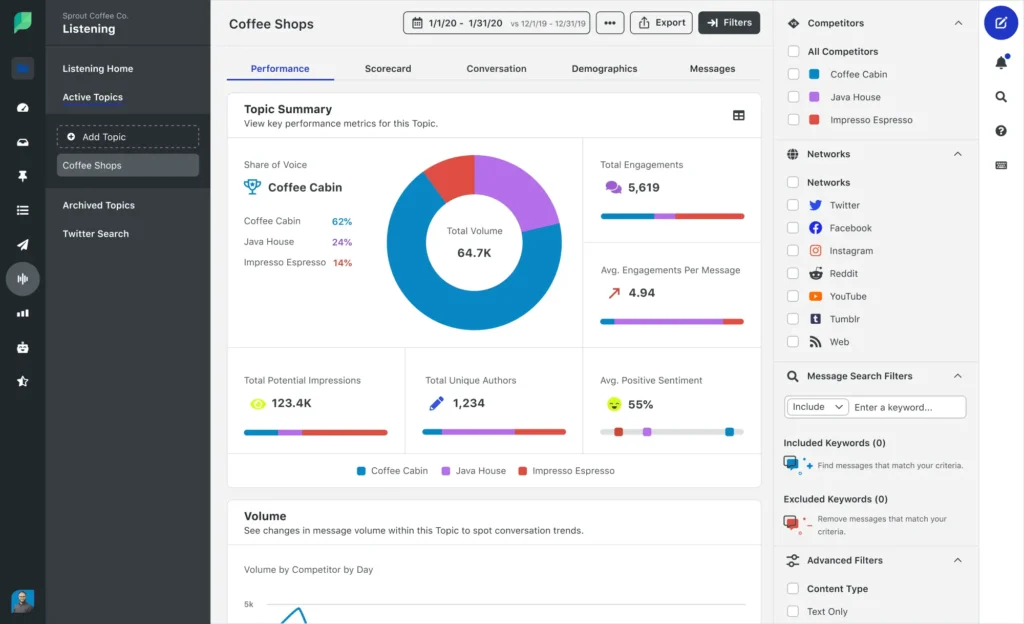
Social media has changed how businesses connect with their audience. It’s where you build relationships, engage with customers, boost your brand, and drive website traffic. For most businesses, it’s important for marketing. You need to be consistent, and to do this, you need good social media management tools.
Why social media is needed: It allows you to talk with your audience, see their preferences, and build a strong brand. You need a social media strategy to reach your goals. This plan will guide your content, posting schedule, and interactions with followers.
Having the right tools is important because they streamline your social media. These tools help you schedule content, see brand mentions, analyze data, and engage effectively with your audience. They save time and help make your social media presence consistent and good.
Social media management tools:
- Mailchimp’s social media marketing tools: Lets you manage and schedule social media posts directly from their platform, integrating with your email campaigns.
- Rewards Fuel: Good for running social media contests and giveaways, which can increase engagement and attract new followers.
- ViralKit: Use this tool to run social media campaigns and increase engagement.
- AppyReward: Use this tool to manage social media marketing and loyalty programs.
Email Marketing: Engaging Your Audience
In digital marketing, email marketing is very powerful for connecting with your audience. Even with social media, email provides a personal touch and a direct line of communication that customers like. It’s a place where you nurture leads, build relationships, and get conversions. The ability to segment your email list lets you send targeted messages based on customer behavior, increasing engagement and making it very relevant. This makes email marketing very effective for small and big businesses. With the right plan and tools, you can make your email campaigns a source of consistent growth.
- Building an email list is the first step, offer good content or discounts for subscribers.
- Segment your audience for better targeted campaigns.
- Create good subject lines, personalized content, and clear calls to action to increase engagement.
- Mailchimp has tools for making visually stunning, automated email campaigns.
- Beefree is a good tool to make responsive emails without coding. It helps your emails display well on all devices.
- For data, use Tabular, it tracks your emails and creates detailed reports.
- TOPOL.io helps create dynamic emails with an easy drag and drop interface.
- There are other options, like Constant Contact and ConvertKit, that might fit your marketing better.
Direct Communication: SMS Marketing Tools
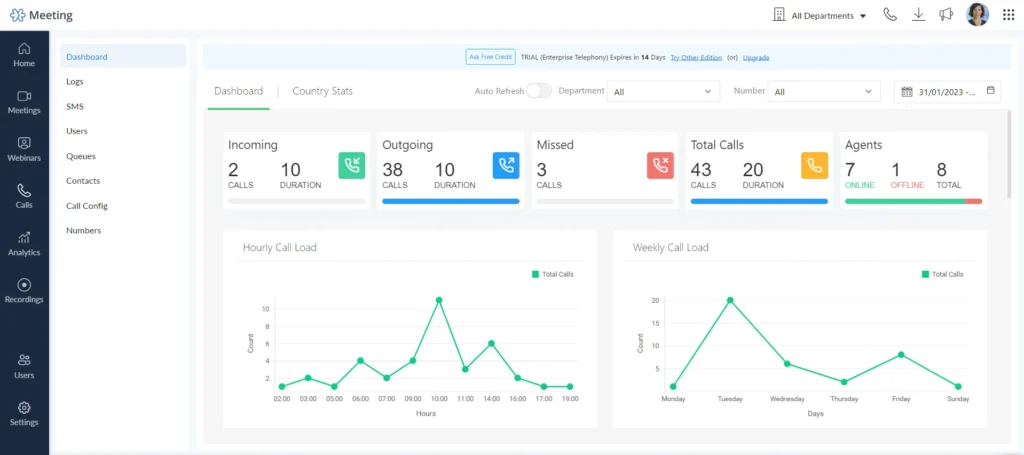
SMS marketing is a great tool for direct communication with your customers. Unlike other marketing channels, SMS messages are opened a lot and are great for sending promotions, updates, or notifications. With SMS marketing, you can reach your audience instantly, making it great for urgent messages and time-sensitive campaigns. However, use SMS responsibly, don’t send too many, to keep a good relationship with your customers. When used well, it leads to higher engagement, more sales, and customer loyalty.
- Use SMS for time-sensitive updates and promotions because they are immediate.
- For SMS campaigns, get consent and follow legal rules.
- Keep messages short and impactful, always include a clear call to action and a way to opt-out to avoid over-communication.
- Mailchimp SMS marketing makes it easy to send text messages and combines it with email marketing.
- There are other tools available, like Twilio and SimpleTexting, to explore.
Driving Traffic: Pay-Per-Click (PPC) Ad Platforms
Pay-per-click advertising or PPC is a good part of digital marketing. It lets businesses drive traffic to their websites fast. Unlike SEO, which takes time, PPC lets you see results fast and target your ideal audience. It’s very effective for generating leads, increasing sales, and brand awareness. But it needs planning and constant improvement to get the best results.
- With PPC, you only pay when someone clicks on your ad. It’s a cost-effective way to drive traffic and generate leads.
- Set clear goals for your campaigns and use detailed targeting options. Use keyword research to focus your ads.
- Keep monitoring and improving your campaigns. Pay attention to ad quality, landing page performance, and budget allocation.
- Meta Ads lets you target users on Facebook and Instagram.
- Google Ads helps you reach users searching for your products and services. It displays your ads on Google search and YouTube.
- Amazon Ads lets you target customers looking to buy your products on their platform.
- LeadsBridge integration lets you optimize lead management, connecting leads to other business platforms.
- Other platforms you can explore are Bing Ads and AdRoll.
Working with Influencers: Influencer Marketing Platforms
Influencer marketing is a good way for brands to connect with their audience in an authentic way. By working with people who have a strong online presence, you tap into a ready audience that is open to your message. Finding the right influencers who fit your brand values is important for building trust. Good collaborations improve your brand awareness, boost engagement, and get conversions.
- Choose influencers who fit your brand and have a solid, engaged following.
- Develop clear campaign goals and expectations for influencers. Provide content guidelines and performance metrics you want to see.
- Create content and campaigns that are good for both sides, making it a good collaboration for the influencer and your company.
- Social Cat is a good tool for discovering influencers in different industries.
- Cameo lets you connect with celebrities for unique collaborations.
- Upfluence helps manage complex influencer campaigns with good analytics.
There are many other influencer marketing options to explore, like AspireIQ and CreatorIQ.
Automating Marketing Tasks: Marketing Automation Tools
Marketing automation is important for modern digital marketing. These tools streamline workflows, taking over tasks that take time. By automating things like email sequences, social media posting, and lead nurturing, you free up your team to focus on creative strategies and building customer relationships. This increases efficiency, ensuring your marketing is consistent and effective. Look for chances to set up automated systems in your business.
- To set up an automation campaign, start by defining your goals and mapping out the customer journey.
- Use tools like Mailchimp’s automation features to create workflows that trigger actions based on customer behavior.
- Integrate payment platforms like Square and Stripe to manage transactions and customer data.
- There are other marketing automation options to explore.
Tracking Performance: Marketing Analytics and Reporting Tools
Data is key to any good marketing campaign, without analytics, you are working blindly. Marketing analytics tools help you understand your performance, see what’s working and what’s not. Using these tools, you can track key metrics, measure your ROI, and make good decisions that drive growth. This data guides your marketing strategy.
- Mailchimp analytics gives you data on email engagement and campaign effectiveness.
- Cyfe, Klipfolio, and DashThis let you create dashboards that pull data from different sources, showing a complete view of your marketing performance.
- Tools like Google Search Console show you your website SEO performance.
- Google Analytics 4 (GA4) shows detailed information about website traffic and conversions.
Look into other options for tracking performance.
Improving Conversion Rates: Conversion Rate Optimization (CRO) Tools
Conversion rate optimization is the art of turning website visitors into paying customers. It’s not enough to just drive traffic to your site, you need to ensure visitors take action. CRO tools give you the info you need to see bottlenecks, test different approaches, and improve the user experience. The goal is to maximize the number of visitors who complete what you want, like making a purchase, signing up for a newsletter, or requesting a demo. It takes a focused approach to improve conversions.
- Use Mailchimp A/B tests to optimize your email and landing page content.
- Optimizely offers advanced testing for website personalization.
- Email heatmaps show where users click in emails.
- Hotjar, EyeTracking, Poptin, and OptinMonster provide a complete view of user behavior with recordings, heatmaps, and pop-ups.
- Use the Meta Pixel to track website actions for your ad campaigns.
There are other CRO tools to use to optimize your online marketing.
Gathering Feedback: Online Customer Survey Platforms
Customer feedback guides your marketing strategy. It shows what customers want, need, and how they see your brand. By getting and analyzing feedback, you can improve your products, services, and customer experience. Online customer survey platforms give you a way to collect this important data.
The Mailchimp survey tool helps you create and send customer surveys, integrating feedback into your workflow.
There are other platforms to collect and analyze customer feedback.
Tracking Your Brand: Brand Monitoring and Social Listening Apps
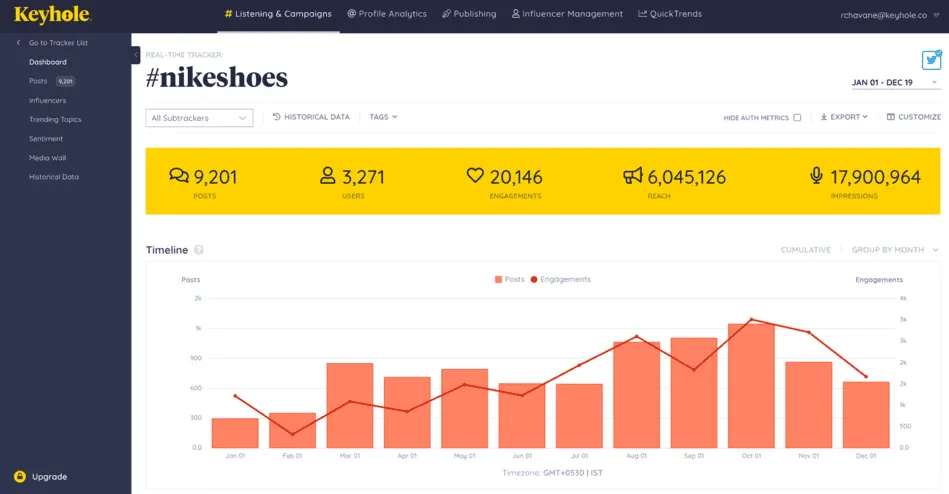
Your brand’s reputation is very valuable, and monitoring what people are saying online is important to protect it. Brand monitoring and social listening apps help you track online opinions, manage your brand’s online presence, and respond to feedback quickly, whether it’s good or bad. It also shows how your brand is seen in the market.
- Keyhole is a good tool to track social media and measure engagement.
- Mention helps you monitor brand mentions across the internet.
- Brandwatch allows for in-depth brand monitoring and important insights.
- Yelp for Business helps you manage reviews and build your reputation.
Use other tools to keep track of your brand online.
Creating Engaging Presentations: Marketing Presentation Software
Good presentations are an important part of marketing, whether you are pitching to clients, training your team, or showing campaign results. The right presentation software can make your message have more impact. Good visuals can make complex ideas easier to understand and keep your audience engaged.
- PowerPoint and Google Slides are standard tools that have basic features for presentations.
- Powtoon lets you create engaging animated presentations.
- Keynote is a good option for Apple users.
- Slidesgo provides many presentation templates to get you started.
Consider other presentation software options that might fit your team better.
Managing Projects: Project Management and Collaboration Tools
Organized campaigns are important for successful marketing, and project management helps keep everything on track. Project management tools streamline your workflow, help manage tasks, and improve team communication. These tools make collaboration easier, so everyone is aligned on goals, deadlines, and responsibilities, improving the efficiency of your marketing.
- Airtable is a good option for data organization and project management.
- Monday.com helps manage complex projects.
- Asana provides a way to manage tasks collaboratively.
Trello is a simple project management tool using boards and lists.
Boosting Your Workday: Productivity Tools and Techniques
Efficiency is key to successful marketing. Productivity tools help streamline workflows, minimize distractions, and optimize how you work. These tools help you focus and make the most of your work hours.
- Shift helps you manage multiple accounts.
- Inbox When Ready improves focus by organizing your email.
- Instapaper lets you save articles and focus on reading.
- Pomofocus is a good tool to use the Pomodoro time management technique.
- FocusBox blocks distracting websites and apps.
- Habitica helps to make tasks and habit creation like a game.
You can explore other options for productivity tools.


